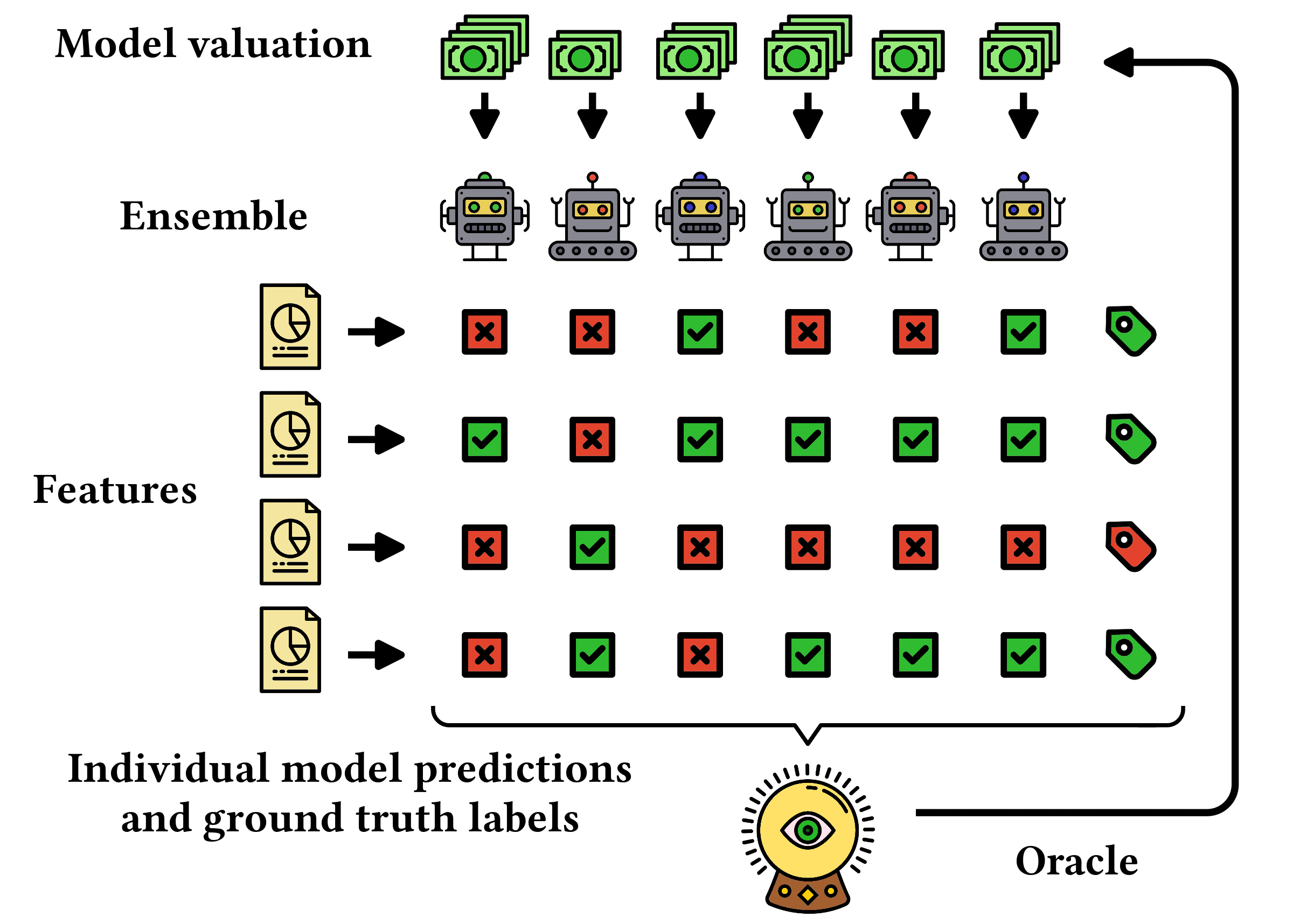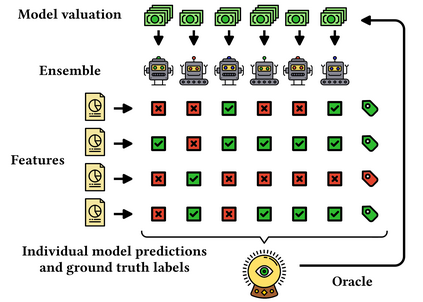How do we decide the fair value of individual classifiers in an ensemble model? We introduce a new class of transferable utility cooperative games to answer this question. The players in ensemble games are pre-trained binary classifiers that collaborate in an ensemble to correctly label points from a dataset. We design Troupe a scalable algorithm that designates payoffs to individual models based on the Shapley value of those in the ensemble game. We show that the approximate Shapley value of classifiers in these games is an adequate measure for selecting a subgroup of highly predictive models. In addition, we introduce the Shapley entropy a new metric to quantify the heterogeneity of machine learning ensembles when it comes to model quality. We analytically prove that our Shapley value approximation algorithm is accurate and scales to large ensembles and big data. Experimental results on graph classification tasks establish that Troupe gives precise estimates of the Shapley value in ensemble games. We demonstrate that the Shapley value can be used for pruning large ensembles, show that complex classifiers have a prime role in correct and incorrect classification decisions, and provide evidence that adversarial models receive a low valuation.
翻译:我们如何在组合模型中决定单个分类器的公平价值? 我们如何在组合模型中决定单个分类器的公平价值? 我们引入了一个新的可转移的实用合作游戏类别来回答这个问题。 组合游戏中的玩家是经过预先训练的二进制分类器, 他们合作使用组合组合来从数据集中正确标签点。 我们设计了一个可缩放的算法, 根据组合游戏中那些组合游戏中那些组合值的模糊值来指定对单个模型的回报。 我们显示,这些游戏中分类器的大致沙普利值是选择高预测模型分组的恰当尺度。 此外, 我们引入了“ 沙佩利 ” 新的衡量器, 用于量化机器学习集合的异质性。 我们从分析上证明, 我们的“ 结构价值近似” 算法是准确的, 和大组合和大数据尺度。 图表分类任务的实验结果证实, Troopepey 准确估计了组合游戏中的沙普利值。 我们证明, Shaply 值可用于运行大型模型, 和低敌对性模型中提供复杂的分析性模型。




